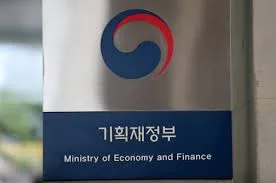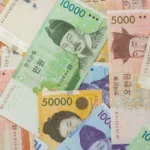In a startling revelation, South Korea’s fiscal deficit for the past year surged nearly 29 trillion KRW beyond initial projections, despite significant reductions in government expenditures. This financial conundrum stems from overly optimistic tax revenue forecasts, resulting in a historic shortfall that reached a staggering 59 trillion KRW. The latest ‘2023 Fiscal Year National Settlement’ report uncovers a fiscal landscape fraught with challenges, as planned cutbacks in spending failed to bridge the widening deficit gap.
The South Korean government’s financial results for the previous year have exposed a startling gap between expectation and reality. Despite planned reductions in governmental expenditures, the fiscal year concluded with a deficit that far exceeded initial forecasts by nearly 29 trillion KRW. The total government income plummeted to 573.9 trillion KRW, a sharp decline from the projected 625.7 trillion KRW approved in the previous December’s budget by the National Assembly.
This financial shortfall was primarily fueled by a significant underestimation in tax revenues. The year began with expectations set high, but the reality was a severe contraction in national tax income, falling short by 56.4 trillion KRW from the budgeted amount. This discrepancy highlighted a critical flaw in revenue estimation practices and underscored the vulnerability of fiscal planning to optimistic economic forecasts.
As the government scrambled to mitigate the impacts of dwindling revenues, total expenditures were slashed to 610.7 trillion KRW, down from the budgeted 638.7 trillion KRW. This cut represented 4.4% of the total budgeted expenditures, which corresponds to approximately 1.3% of the Gross Domestic Product (GDP), calculated at a provisional 2236.3 trillion KRW for the same year. Despite these aggressive spending reductions, the year’s fiscal activities culminated in an economic environment where the government struggled to perform its critical role in economic stabilization during downturns.
The optimism of South Korea’s fiscal forecasters not only led to a significant revenue shortfall but also imposed unforeseen burdens on local governmental bodies and educational authorities. These local entities were compelled to absorb the brunt of budgetary contractions, originally intended to be covered by anticipated tax revenues that never materialized.
This miscalculation had widespread effects. Firstly, the large gap in expected versus actual tax receipts meant that numerous planned projects and essential services were either downscaled or postponed indefinitely. This created a ripple effect, wherein reduced government spending further exacerbated the economic slowdown, depriving the economy of much-needed governmental expenditure during a period of fiscal stress.
Moreover, the financial strain was unevenly distributed, with significant reductions in allocations to local governments and educational sectors. These cuts totaled approximately 18.6 trillion KRW and significantly impacted local development projects and educational initiatives. This scenario has raised concerns about the long-term sustainability of local economies and the quality of public education, which are heavily reliant on consistent and adequate funding.
Additionally, the shortfall prompted the government to pull emergency funds from reserves like the Foreign Exchange Equalization Fund, which, while cushioning the blow to some extent, highlighted the reactive rather than proactive nature of the fiscal management under the current administration. This reliance on emergency funds to cover operational shortfalls underscores the precariousness of relying on overly optimistic financial projections.
Faced with an unprecedented revenue shortfall, the South Korean government adopted aggressive fiscal measures, markedly reducing planned expenditures in an effort to mitigate the expanding budget deficit. Despite these efforts, the results were less effective than anticipated, reflecting the challenges of balancing fiscal responsibility with economic stimulation during downturns.
The total expenditures for the year were cut to 610.7 trillion KRW, a reduction of 28 trillion KRW from the original budget. This reduction represented 4.4% of the total planned expenditures, which is a significant contraction in the context of national economic management. These cuts were primarily in non-essential public sector spending and capital investments, which, while prudent on paper, contributed to the economic slowdown by reducing governmental economic stimuli at a critical time.
Critically, the reduction in expenditures didn’t occur in isolation. The government also sourced additional funds from the Foreign Exchange Equalization Fund, which is typically reserved for stabilizing the national currency. Drawing from this fund underscored the severity of the fiscal situation but also sparked debate about the sustainability and prudence of using such reserves to cover operational budget deficits.
This approach to fiscal management has been criticized for being reactive rather than strategic. Critics argue that the government’s reliance on emergency funds and ad-hoc spending cuts reflects a lack of long-term planning and an inadequate response to the underlying economic challenges. The use of such funds to offset budget deficits is seen as a temporary solution that fails to address the systemic issues contributing to fiscal imbalances.
The South Korean government’s handling of its fiscal deficit has not been without controversy. Particularly contentious has been the handling of the budget, characterized by a record-high amount of ‘non-utilization’ funds—45.7 trillion KRW that were allocated but ultimately unspent. This has led to widespread criticism from various sectors, accusing the government of poor budget management and lack of foresight.
This unprecedented level of non-utilization surpasses previous years, where unspent funds ranged between 7 to 12 trillion KRW annually. Critics argue that this not only reflects a mismanagement of resources but also a failure to adequately respond to the economic downturn. Instead of reallocating these funds to more crucial areas or returning them to the economy through other means, they were simply left unused, exacerbating the economic stagnation.
Moreover, the burden of budget cuts predominantly fell on local governments and educational institutions. This decentralization of fiscal pain has sparked further debate about equity and efficiency in governmental fiscal policies. Local entities were forced to scale back projects and services essential for community well-being and development, thereby deepening the economic and social impacts of the central government’s fiscal shortcomings.
Additionally, the Ministry of Economy and Finance has been criticized for its arbitrary fiscal management, particularly in its deviation from standard practices of fiscal adjustment through supplementary budgets. Critics claim that this ad-hoc approach has compromised the government’s ability to effectively manage the economy, highlighting a need for more consistent and transparent fiscal policies.
South Korea’s fiscal management throughout the last fiscal year has unfolded as a complex narrative of ambitious forecasts, unexpected shortfalls, and controversial cutbacks. The substantial fiscal deficit, exacerbated by a historic 59 trillion KRW revenue shortfall, underscores the challenges of relying on optimistic economic predictions in an unstable global economic climate.
The government’s response, characterized by substantial expenditure cuts and the controversial use of the Foreign Exchange Equalization Fund, has sparked debate about the effectiveness and sustainability of such measures. While these actions were intended to stabilize the fiscal situation, they have also highlighted the need for more robust and adaptable fiscal strategies that can better anticipate economic fluctuations and respond to them more effectively.
Looking forward, the challenges of aligning sound fiscal policies with economic growth initiatives remain daunting. The upcoming National Fiscal Strategy Meeting is anticipated to be a critical juncture for reassessing and potentially recalibrating South Korea’s fiscal strategies. Stakeholders from across the economic spectrum are calling for a comprehensive approach that not only addresses immediate budgetary concerns but also lays the groundwork for sustainable economic health and resilience.
As South Korea crosses the 50% debt-to-GDP threshold for the first time, the decisions made in the coming months will be crucial in shaping the country’s fiscal and economic trajectory. The balance between fiscal discipline and economic stimulation remains a delicate one, requiring careful consideration and strategic foresight.



